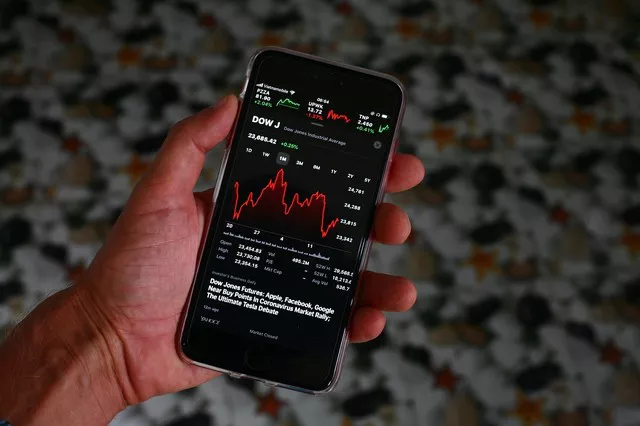In the dynamic world of finance, staying informed about market trends and price movements is crucial for traders, investors, and financial professionals. One key aspect of the financial landscape is the futures market, where contracts for the future delivery of assets are bought and sold. This comprehensive guide explores various methods and tools to check the US futures market, empowering individuals to make informed decisions and navigate the complexities of futures trading.
1. Online Platforms and Exchanges
A primary avenue for checking the US futures market is through online platforms and exchanges that provide real-time market data and trading functionalities. Major futures exchanges in the United States, such as the Chicago Mercantile Exchange (CME), offer dedicated websites and platforms where users can access live quotes, charts, and other relevant information for a wide range of futures contracts.
These online platforms often provide comprehensive market overviews, allowing users to track the performance of various futures contracts, view historical price data, and analyze market trends. Additionally, users can often customize their watchlists to focus on specific contracts or asset classes, enhancing their ability to monitor the instruments of interest.
2. Financial News Websites and Apps
Keeping abreast of financial news is essential for understanding the factors influencing the US futures market. Numerous financial news websites and mobile apps provide up-to-the-minute coverage of market developments, economic indicators, and geopolitical events that can impact futures prices.
Reputable financial news sources, such as Bloomberg, CNBC, and Reuters, offer dedicated sections or tools for tracking futures markets. Users can find information on contract prices, market commentaries, and expert analyses to gain insights into the current state of the futures market and potential future movements.
See Also: Why do traders look at futures?
3. Futures Market Data Providers
Specialized market data providers offer in-depth information and analytics tailored to the needs of traders and investors in the futures market. These providers aggregate and deliver real-time data, historical prices, and advanced charting tools, providing a comprehensive view of the US futures market.
Well-known market data providers include CME Group itself, which offers a wide range of market data services, and other third-party providers such as TradingView, Investing.com, and Quandl. These platforms often allow users to customize charts, apply technical analysis tools, and access data feeds for specific futures contracts or market indices.
4. Brokerage Platforms
Individuals engaged in futures trading often use brokerage platforms to execute trades, and these platforms typically offer robust tools for monitoring the futures market. Brokerage platforms provide real-time quotes, customizable dashboards, and risk management features that empower users to make informed decisions.
Leading futures brokers, such as TD Ameritrade, Interactive Brokers, and E*TRADE, offer user-friendly platforms with advanced charting capabilities. Traders can use these platforms to check contract prices, monitor their positions, and access research and analysis tools to inform their trading strategies.
5. Regulatory Websites
For a more formal and regulatory perspective on the US futures market, individuals can refer to the websites of relevant regulatory bodies. In the United States, the Commodity Futures Trading Commission (CFTC) serves as the primary regulatory authority overseeing futures trading. The CFTC’s website provides valuable information on market reports, enforcement actions, and regulatory developments that may impact the futures market.
Monitoring regulatory updates is crucial for understanding changes in market structure, compliance requirements, and potential shifts in market dynamics. The CFTC’s commitment to transparency ensures that market participants have access to essential information for navigating the regulatory landscape.
6. Mobile Apps for On-the-Go Monitoring
In an era where information is constantly at our fingertips, mobile apps play a pivotal role in facilitating on-the-go monitoring of the US futures market. Many brokerage platforms and financial news providers offer mobile apps that enable users to check futures prices, receive market alerts, and access relevant news articles from their smartphones or tablets.
Mobile apps provide a convenient way for traders and investors to stay connected to the market, even when away from their desktop computers. These apps often feature user-friendly interfaces and customizable dashboards, enhancing the overall user experience.
7. Social Media and Online Communities
The advent of social media has transformed the way market participants share and consume information. Traders and investors can leverage social media platforms, such as Twitter, for real-time updates, market commentary, and discussions related to the US futures market. Following relevant financial analysts, market commentators, and official accounts of exchanges can provide a continuous stream of market insights.
Additionally, online communities and forums dedicated to trading and investing may offer valuable discussions, analyses, and shared experiences related to the US futures market. Engaging with the online trading community can provide diverse perspectives and potentially uncover market trends or news not immediately apparent through traditional sources.
Conclusion
Navigating the US futures market requires a multifaceted approach, utilizing a combination of online platforms, financial news sources, market data providers, brokerage platforms, regulatory websites, mobile apps, and social media. By leveraging these tools and resources, traders and investors can access real-time market data, stay informed about relevant news and developments, and make informed decisions to manage their positions effectively.
Staying vigilant and regularly checking the US futures market is not only a best practice but an essential aspect of success in the dynamic and ever-evolving world of futures trading. Whether using advanced charting tools, following market experts on social media, or relying on regulatory updates, individuals can tailor their approach to align with their trading strategies and stay ahead in the fast-paced environment of futures trading.


